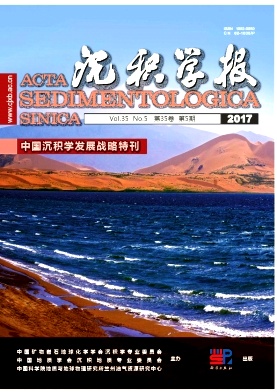Development of Shelf-edge Delta Researches and Typical Case Analyses
doi: 10.14027/j.cnki.cjxb.2017.05.007
- Received Date: 2017-05-16
- Rev Recd Date: 2017-06-30
- Publish Date: 2017-10-10
-
Key words:
- shelf-edge delta /
- deep-water fan /
- controlling factors /
- predication model /
- Heshan Depression /
- Northern South China Sea
Abstract: Since last century nineties, a special marine delta named shelf-edge delta widely developed at the margin of the shelf has been an international interest and new field for petroleum exploration, which is commonly characterized by thick-bedded sand-rich deposits, large-scaled distribution, high porosity and perfect petroleum accumulation conditions associated with marine slope or deep-water fan deposits. The shelf-edge delta is usually developed during the falling stage or low-stand stage of sea-level, influenced by the slope tectonic structures. However, it can also occur during the high-stand stage, comprehensively controlled by sediment supply, accommodation space and climate conditions, and sometimes of wave or tide influence. Previous studies have extensively indicated that the deepwater sedimentation prediction based on shelf-slope clinoform growth model is similar to the shelf edge trajectory migration motif. Steeply rising shelf-edge trajectories and dominantly aggradational stacking patterns are fronted by large-scale mass-transport systems, while, flat to slightly falling shelf-edge trajectories and progradational and downstepping stacking patterns are empirically related to large-scale submarine fan systems associated sand-rich gravity flows. Slightly rising shelf-edge trajectories and progradational and aggradational stacking patterns are associated with mixed sand/mud gravity flows and moderate-scale slope-sand deposits. Abundant examples have been identified that the sand-rich deposits of shelf-edge delta and deep-water fan systems serve a perfect source-reservoir-capping condition, prove to be good petroleum exploration targets. A large-scale and thick-bedded Oligocene shelf-edge delta deposits are observed in the Heshan Depression of Pearl River Mouth basin, northern slope of the South China Sea, in response to the sufficient sediment supply from the ancient Pearl River with a slow tectonic subsidence. Associated with the migration of shelf edge, the sigmoid seismic progradations of shelf-edge delta are significantly seaward prograded. The occurrence of incised valley and large scale submarine fan systems during the late Oligocene times, together with observed seismic reflection geometries suggest the development of flat to slightly falling shelf-edge trajectories and progradational and downstepping stacking patterns in the Heshan Depression. The related thick-bedded submarine fan systems associated sand-rich deposits are important and potential strategic oil and gas exploration targets in the future.
| Citation: | ZHU XiaoMin, GE JiaWang, ZHAO HongChao, YUAN LiZhong, LIU Jun. Development of Shelf-edge Delta Researches and Typical Case Analyses[J]. Acta Sedimentologica Sinica, 2017, 35(5): 945-957. doi: 10.14027/j.cnki.cjxb.2017.05.007 |






 DownLoad:
DownLoad: